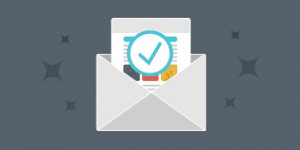Overview
cPanel organizes all the files in your account into folders. Use the File Manager interface to manage and edit your files.
Change Settings
To change the folder in which the File Manager interface opens, perform the following steps:
-
Click Settings. The Preferences interface will appear.
-
Select a folder to open by default:
- Home Directory — The main folder for your account.
- Web Root (public_html or www) — The most direct route to your files.
- Public FTP Root (public_ftp) — The folder for your FTP files.
- Document Root for: — The folder for the domain that you select from the menu.
-
To display hidden files in the interface, select Show Hidden Files (dotfiles).
-
To prevent messages about character encodings from displaying, select Disable Character Encoding Verification Dialogs.
-
Click Save.
Character encoding verification dialogs
When you edit a file with the Edit or HTML Editor actions, an interface appears to confirm the file’s character encoding. Use the menu to select the correct character encoding for the file. Then, click Edit to continue.
- Click Toggle Help for more information about how to select the correct character encoding.
- Click Disable Encoding Check to turn off future encoding verifications.
Working with files and folders
The File Manager interface allows you to perform many actions on your files and folders.
Create or copy files or folders
To create a new file or folder, perform the following steps:
- Click + File or + Folder in the toolbar. A new interface will appear.
- Enter the new item’s name in the New File Name: or New Folder Name: text box
3. Enter the location in which the system will create the item in the New file will be created in: or New folder will be created in: text box.
4. Click Create New File or Create New Folder.
To copy one or more files, perform the following steps:
- Select the files you want to copy.
2. Click Copy from the toolbar at the top of the interface. The Copy interface will appear.
3. In the Copy interface, enter the file path for which you want to save the item in the Enter the file path that you want to copy this file to: text box.
4. Click Copy File(s) to copy the files.
Move files or folders
To move one or more files, perform the following steps:
- Select the file or files that you want to move.
- Click Move in the toolbar at the top of the interface. The Move interface will appear.
- Enter the file path that you want to move the file to in the Enter the file path that you want to move this file to: text box.
- Click Move File(s) to move the file.
You can also move files by:
- Dragging a file icon into a new destination folder.
- Clicking on a file and then clicking Rename in the toolbar.
Update file or folder permissions
To modify a file or folder’s permissions, perform the following steps:
- Select the file or folder for which to change the permissions.
- From the toolbar, click Permissions. The Change Permissions interface will appear.
- Use the checkboxes or text boxes to change the item’s permissions. This setting defaults to
0644. - Click Change Permissions to save your changes.
Delete or restore files and folders
- When you delete files or folders, the system does not permanently delete the files. Instead, the system moves the files to the Trash folder.
- Click Empty Trash to permanently delete the Trash folder’s contents.
To delete a file or folder, perform the following steps:
- Select the file or folder you want to delete.
- In the toolbar, click Delete. The Trash interface will appear.
- Click Confirm to confirm that you want to delete the file or folder.
To restore a file or folder, perform the following steps:
- Click View Trash from the toolbar.
- Select the file or folder that you want to restore.
- Click Restore in the toolbar.
- Confirm that you want to restore the item.
Other item actions
.zip format if Zip exists on your server. Your hosting provider can use WHM’s EasyApache 4 interface (WHM >> Home >> Software >> EasyApache 4) to install this PHP extension.
Right-click files or folders to select from a menu of actions that the system customizes based on the file’s type
Search for an item
The Search text box at the top-right corner of the interface allows users to search for a specific file. By default, the Search text box searches all files in the home folder. You can limit the search to the document root at /home/user/public_html, where user represents your cPanel username. You can also limit the search to the folder in the interface.
To search for a file, perform the following steps:
-
Use the Search menu to select the folder to search. You can select from the following options:
- All Your Files
- only public_html
- Current Directory
-
Enter the desired file name in the text box.
-
Click Go.
A new interface displays the filenames that match your search.
- To go to a folder, or go to the folder that contains the file, double-click the desired item in the list.
- If no files that include your search term exist, a No records found message appears.




